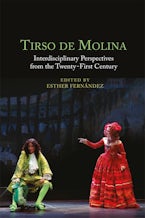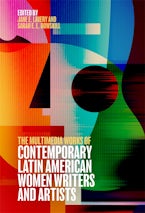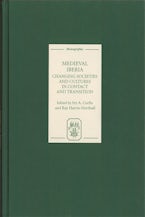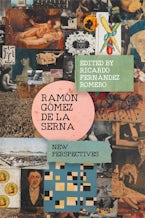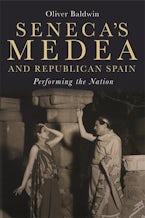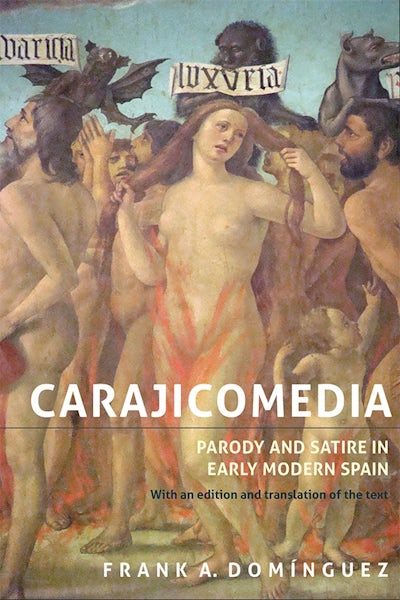
Title Details
609 Pages
23.4 x 15.6 cm
18 b/w illus.
Series: Monografías A
Series Vol. Number:
353
Imprint: Tamesis Books
Carajicomedia: Parody and Satire in Early Modern Spain
With an Edition and Translation of the Text
- Description
- Contents
- Reviews
A study and edition of one of the most ignored works of early Spanish literature because of its strong sexual content, this work examines the social ideology that conditioned the reactions of people to the events it describes as well as Fernando de Rojas's masterpiece, Celestina.
Since Carajicomedia was published in 1519, it has been largely ignored by critics because of its strong sexual content. The author of Carajicomedia: Parody and Satire in Early Modern Spain believes that it is a sophisticated and complex composition that provides as good a vantage point from which to examine the ideology of the period as does La Celestina.
In their poems, the writers of Carajicomedia inadvertently reveal thedeep worries of the knights and nobles who opposed the regencies of Ferdinand the Catholic and Francisco Jiménez de Cisneros pending the arrival of Charles V. Carajicomedia is therefore a harbinger of the War of the Comuneros, the great popular revolt that convulsed Spain in 1520.
In this book's chapters, the author examines the parodic relationship between the text of Juan de Mena's El Laberinto de Fortuna, the glosses of Hernán Núñez's Las Trezientas, and Carajicomedia. He then turns to its actual writers and their settings, and shows how their satirical attitudes towards males, females, and conversos reveals the failure of the societal mechanisms in place to control desire and miscegenation. Carajicomedia: Parody and Satire in Early Modern Spain concludes with a paleographic edition of the text and appendices that contain a modern Spanish version and its Englishtranslation, as well as examine Carajicomedia's language.
Frank A. Domínguez is a professor of medieval Spanish literature and culture at the University of North Carolina at Chapel Hill.
Since Carajicomedia was published in 1519, it has been largely ignored by critics because of its strong sexual content. The author of Carajicomedia: Parody and Satire in Early Modern Spain believes that it is a sophisticated and complex composition that provides as good a vantage point from which to examine the ideology of the period as does La Celestina.
In their poems, the writers of Carajicomedia inadvertently reveal thedeep worries of the knights and nobles who opposed the regencies of Ferdinand the Catholic and Francisco Jiménez de Cisneros pending the arrival of Charles V. Carajicomedia is therefore a harbinger of the War of the Comuneros, the great popular revolt that convulsed Spain in 1520.
In this book's chapters, the author examines the parodic relationship between the text of Juan de Mena's El Laberinto de Fortuna, the glosses of Hernán Núñez's Las Trezientas, and Carajicomedia. He then turns to its actual writers and their settings, and shows how their satirical attitudes towards males, females, and conversos reveals the failure of the societal mechanisms in place to control desire and miscegenation. Carajicomedia: Parody and Satire in Early Modern Spain concludes with a paleographic edition of the text and appendices that contain a modern Spanish version and its Englishtranslation, as well as examine Carajicomedia's language.
Frank A. Domínguez is a professor of medieval Spanish literature and culture at the University of North Carolina at Chapel Hill.
Preface
Part I: Las Trezientas and Carajicomedia
The Model and the Parody: Las Trezientas and Carajicomedia
Authorship and Setting: The Fictional Narrators and the Real Author(s)
Part II: Cultural Ideology: Gender Roles
Women and Power: El Laberinto de Fortuna's Divina Providencia and Carajicomedia's María de Vellasco
Men and Power: El Laberinto de Fortuna's Juan II and Carajicomedia's Diego Fajardo
Part III: Political Satire and Ideology
Carajicomedia's Satire of Individuals
Propaganda and Its Uses
Conclusion: The Purpose and Fate of Carajicomedia
Part IV: A Paleographic Edition and Translation of Carajicomedia
Appendix A: Carajicomedia: A Modern Spanish Edition
Appendix B: The Erotic Language of Carajicomedia
Bibliography
Index
Part I: Las Trezientas and Carajicomedia
The Model and the Parody: Las Trezientas and Carajicomedia
Authorship and Setting: The Fictional Narrators and the Real Author(s)
Part II: Cultural Ideology: Gender Roles
Women and Power: El Laberinto de Fortuna's Divina Providencia and Carajicomedia's María de Vellasco
Men and Power: El Laberinto de Fortuna's Juan II and Carajicomedia's Diego Fajardo
Part III: Political Satire and Ideology
Carajicomedia's Satire of Individuals
Propaganda and Its Uses
Conclusion: The Purpose and Fate of Carajicomedia
Part IV: A Paleographic Edition and Translation of Carajicomedia
Appendix A: Carajicomedia: A Modern Spanish Edition
Appendix B: The Erotic Language of Carajicomedia
Bibliography
Index
"Frank Domínguez's book is, in short, the most complete, systematic, and exhaustive study of the Carajacomedia, as well as an attempt to remove the old text from the estate of philology or literary archeology and give it a modern patina that makes it attractive to the contemporary community of experts." IBEROAMERICANA
"Carajicomedia emerges as a very interesting and complex text. [Domínguez's] rich and deep contextualization of the poem, his incisive close readings . . . along with his meticulous commentary, and very useful translation, will make this book the standard study and edition of this important and provocative work. The book will be indispensable for specialists in the literature of medieval and early modern Iberia, as well as for historians, and for literary and cultural scholars of other periods and traditions, particularly non-Spanish readers, who will now have access to the text thanks to this translation." SIXTEENTH CENTURY JOURNAL
Hardcover
9781855662896
December 2015
$145.00 / £99.00
Ebook (EPDF)
9781782046974
December 2015
£24.99 / $29.95
Title Details
609 Pages
2.34 x 1.56 cm
18 b/w illus.
Series: Monografías A
Series Vol. Number:
353
Imprint: Tamesis Books







